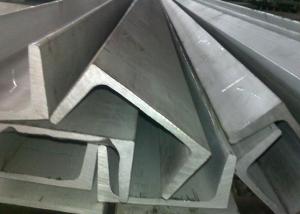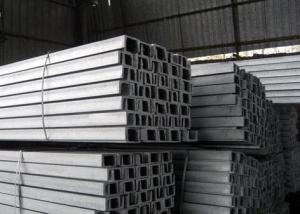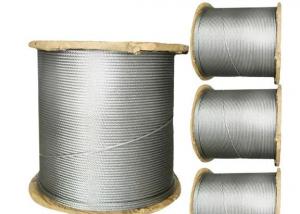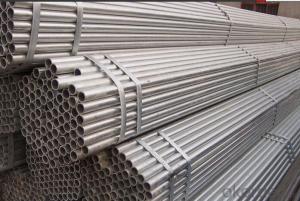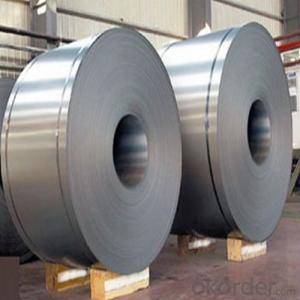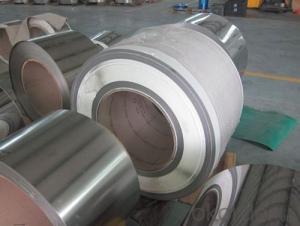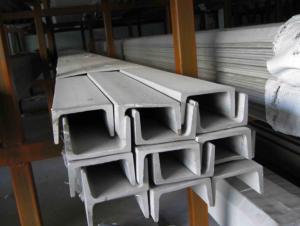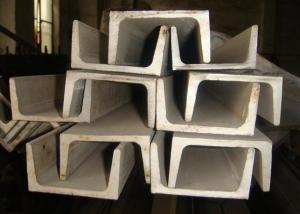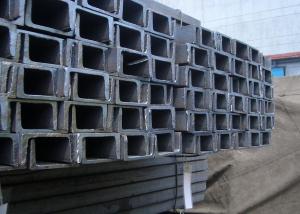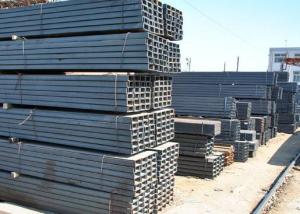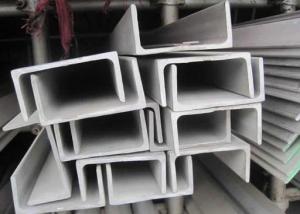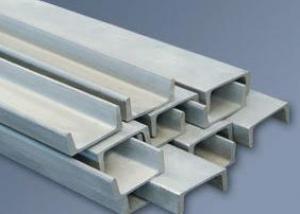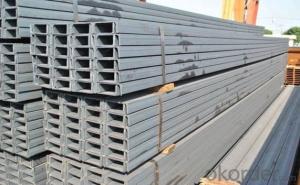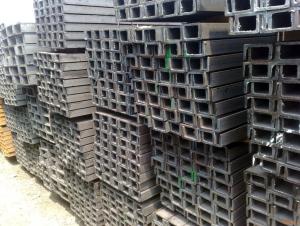Best Quality for 304 Stainless Steel Channels
- Loading Port:
- China Main Port
- Payment Terms:
- TT or LC
- Min Order Qty:
- 5 Tons m.t.
- Supply Capability:
- 1000 Tons Per Month m.t./month
OKorder Service Pledge
OKorder Financial Service
You Might Also Like
Stainless Steel Channels
General Informaiton of Stainless Steel Channels
Stainless Steel Channel, is ideal for all applications where greater strength and superior corrosion resistance is required.
Stainless Channel has a durable dull, mill finish that is widely used for all types of fabrication projects that are exposed to the elements - chemical, acidic, fresh water, and salt water environments.
The standard length for most size channel is 12’-14’ random lengths, but lengths are available in some sizes up to 20’ and longer.
Finishes on channel can vary and include cold drawn, center less ground; smooth turned, rough turned, turned ground and polished, and HRAP.
1. We will custom saw cut to length
2. DEFARS or domestic material available in many sizes
3. Polishing services are available
Spefification of Stainless Steel Channels
Product Name | Stainless Steel Channel |
Standard | JIS, ASTM, GB, DIN, EN, AISI |
Grade | 301,302,303,304,304L,305,309S,310S,316,316L,317,317L,321,347 631... |
Diameter | 75x30x6mm many other sizes can be done |
Length | 1m~6m |
Package Detail | Export standard package, bundled or be required. The inner size of container is below: 20ft GP: 5.9m(length) x 2.13m(width) x 2.18m(high) about 24-26CBM 40ft GP: 11.8m(length) x 2.13m(width) x 2.18m(high) about 54CBM 40ft HG: 11.8m(length) x 2.13m(width) x 2.72m(high) about 68CBM |
Delivery Time | Normally according to the order quantity or upon negotiation |
Payment Terms | L/C, T/T |
Application | Food stuff, gas, metallurgy, biology, electron, chemical, petroleum, boilers, nuclear, energy, construction field, ships building industry, war and electricity industry, boiler heat exchanger, machinery and hardware fields and medical equipment, fertilizer, etc. |
Contact | Our products are very popular because of high-quality and reasonable prices. If you are interested in any of our products, please feel free to contact us for more information. |
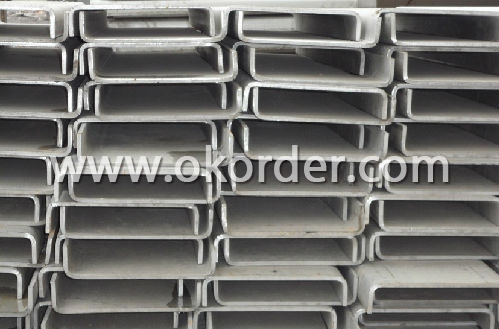

- Q:Are stainless steel channels suitable for pharmaceutical or medical applications?
- Yes, stainless steel channels are suitable for pharmaceutical or medical applications. Stainless steel is commonly used in pharmaceutical and medical industries due to its excellent corrosion resistance, hygienic properties, and durability. Stainless steel channels provide a robust and reliable solution for various applications in these industries, such as the construction of cleanrooms, equipment frames, and storage systems. The material can withstand harsh cleaning agents and sterilization processes without corroding or contaminating the environment. Additionally, stainless steel is non-porous, making it resistant to bacteria growth and easy to clean. These qualities make stainless steel channels an ideal choice for pharmaceutical or medical applications where cleanliness, hygiene, and long-term performance are crucial.
- Q:Can stainless steel channels be used in food processing facilities?
- Yes, stainless steel channels can be used in food processing facilities. Stainless steel is a popular choice for equipment and structures used in the food industry due to its many beneficial properties. Firstly, stainless steel is highly resistant to corrosion, which is crucial in an environment where food and liquids are constantly present. It does not rust, stain, or react with most chemicals, ensuring that the channels remain hygienic and safe for food processing. Secondly, stainless steel is easy to clean and maintain. It has a smooth surface that is resistant to bacteria buildup, making it ideal for areas where food is handled. Regular cleaning and sanitization routines can be easily carried out, ensuring food safety standards are met. Additionally, stainless steel has excellent strength and durability. It can withstand heavy loads and is resistant to impact and abrasion, making it suitable for handling equipment or structures that may be subject to high-pressure or heavy-duty operations in food processing facilities. Stainless steel is also a non-porous material, meaning it does not absorb odors, flavors, or contaminants. This property is important in the food industry as it helps to prevent cross-contamination and ensures the integrity and quality of the processed food. Overall, stainless steel channels are highly suitable for use in food processing facilities due to their corrosion resistance, ease of cleaning, strength, and non-porous nature. They provide a hygienic and durable solution for the transportation and handling of food products within the facility.
- Q:How do stainless steel channels perform in earthquake resistance or seismic design?
- Stainless steel channels are not commonly used as primary structural elements in earthquake resistance or seismic design. However, they can be utilized as secondary supports or non-structural components in such designs. The seismic performance of stainless steel channels is typically dependent on their connections and support systems rather than their inherent material properties. Proper design and engineering considerations must be taken into account to ensure their stability and performance during earthquakes.
- Q:Can stainless steel channels be used in the construction of solar panel support structures?
- Yes, stainless steel channels can be used in the construction of solar panel support structures. Stainless steel is known for its durability, corrosion resistance, and structural strength, making it an ideal material for supporting the weight of solar panels and withstanding outdoor elements. Additionally, stainless steel's long lifespan and low maintenance requirements make it a cost-effective choice for solar panel support structures.
- Q:How do stainless steel channels perform in high-temperature applications?
- Stainless steel channels are known for their excellent performance in high-temperature applications. Due to their high melting point and heat resistance, stainless steel channels can withstand extreme temperatures without any significant loss in strength or structural integrity. The presence of chromium in stainless steel makes it highly resistant to oxidation, preventing the formation of scale or rust when exposed to high heat. This property allows stainless steel channels to maintain their appearance and functionality even in extreme temperature environments. Additionally, stainless steel channels possess excellent thermal conductivity, which allows them to efficiently distribute and dissipate heat. This characteristic is particularly beneficial in high-temperature applications where the channels need to transfer heat away from sensitive components or equipment. Stainless steel channels also have low thermal expansion, meaning they do not warp or deform when subjected to rapid temperature changes, ensuring their dimensional stability and reliability. Furthermore, stainless steel channels offer exceptional corrosion resistance, which is crucial in high-temperature environments where the presence of moisture, chemicals, or other corrosive agents is common. They are capable of withstanding harsh conditions and maintaining their structural integrity, even in aggressive chemical environments. Overall, stainless steel channels are an ideal choice for high-temperature applications due to their excellent heat resistance, thermal conductivity, dimensional stability, and corrosion resistance. Whether it is in industrial furnaces, power plants, or automotive exhaust systems, stainless steel channels provide reliable and long-lasting performance in demanding high-temperature environments.
- Q:Are stainless steel channels prone to staining?
- Stainless steel channels are popularly recognized for their ability to resist stains. This is due to the considerable amounts of chromium found in the stainless steel alloys, which generate a protective oxide layer on the surface. This layer functions as a barrier against corrosion and staining by preventing the steel from interacting with oxygen and moisture. Consequently, the likelihood of staining is reduced. Nevertheless, it is crucial to acknowledge that despite their high resistance to staining, stainless steel channels are not entirely impervious. Certain factors such as exposure to harsh chemicals, excessive humidity levels, or prolonged contact with specific substances can still result in staining. In such situations, it is recommended to regularly clean the channels and utilize appropriate cleaning products to uphold their appearance and prevent any potential staining.
- Q:What are the load-bearing capabilities of stainless steel channels?
- Various factors, such as the type of stainless steel, channel dimensions and geometry, and the application, contribute to the load-bearing capabilities of stainless steel channels. Stainless steel channels possess strength and durability, making them suitable for a wide range of load-bearing applications. Grade 304 or 316 stainless steel is commonly used for channels due to their corrosion resistance and structural integrity. To determine the load-bearing capacity of stainless steel channels, one must consider the material's yield strength, which is the maximum stress it can withstand before permanent deformation occurs. Stainless steel channels typically have high yield strengths, ranging from 30,000 to 90,000 psi, depending on the grade and thickness of the material. However, it is crucial to note that the material alone does not determine the load-bearing capabilities. The design, installation, and support structure of the channel play significant roles in determining its ultimate load-bearing capacity. Factors like the number and spacing of fasteners, distance between supports, and load distribution all require careful consideration. In general, stainless steel channels can support substantial loads, ranging from light to heavy, depending on the specific application and design. They are commonly employed in construction, infrastructure projects, and industrial applications where durability and strength are essential. To accurately determine the load-bearing capabilities of stainless steel channels for a specific application, it is advisable to consult relevant engineering standards, guidelines, or seek the assistance of a professional engineer. They can provide detailed calculations and recommendations based on the project's specific requirements and conditions.
- Q:Can stainless steel channels be used for support braces?
- Yes, stainless steel channels can be used for support braces. Stainless steel is known for its strength and durability, making it an excellent choice for structural support applications. Stainless steel channels are specifically designed to provide support and reinforcement in various construction projects, including braces. They offer excellent load-bearing capacity and can withstand heavy loads without deforming or bending. Additionally, stainless steel channels are resistant to corrosion and can withstand harsh environmental conditions, making them suitable for long-term use. Overall, stainless steel channels are a reliable and effective option for support braces in various industries and applications.
- Q:What are the standard lengths of stainless steel channels?
- The standard lengths of stainless steel channels can vary depending on the manufacturer and the specific type of channel. However, common standard lengths for stainless steel channels range from 12 feet to 20 feet. It is important to note that custom lengths can also be ordered to meet specific project requirements.
- Q:How do stainless steel channels perform in high-vibration environments?
- Stainless steel channels are renowned for their exceptional durability, corrosion resistance, and strength, making them a favored choice for a variety of applications, including those in high-vibration environments. In such settings, stainless steel channels exhibit remarkable performance owing to their distinctive properties and design characteristics. To begin with, stainless steel channels possess a commendable resistance to fatigue and stress corrosion cracking, two prevalent issues encountered in high-vibration environments. This resistance ensures that the channels can endure extended exposure to vibrations without experiencing significant degradation or failure. Of particular importance is the material's ability to withstand fatigue in environments where constant vibrations can lead to material fatigue and subsequent structural damage. Furthermore, stainless steel channels boast outstanding mechanical properties, notably high tensile strength and stiffness. These attributes allow them to maintain their structural integrity even in the face of intense vibrations. The strength and stiffness of the channels prevent them from bending, warping, or deforming, thereby ensuring that their performance and functionality remain unaffected in high-vibration environments. Moreover, stainless steel channels possess a high natural frequency, rendering them less susceptible to resonance. Resonance occurs when the frequency of vibrations aligns with the natural frequency of a structure, resulting in amplified vibrations that can cause severe damage. The high natural frequency of stainless steel channels helps mitigate the risk of resonance and ensures effective vibration dissipation. Additionally, stainless steel channels exhibit excellent damping properties, enabling them to efficiently absorb and dissipate vibrations. This damping ability aids in reducing the transmission of vibrations to other parts of the structure, thereby minimizing the overall impact and potential damage caused by vibrations. Lastly, stainless steel channels are characterized by ease of installation and maintenance. Their versatility allows for various installation methods, ensuring secure fastening in high-vibration environments. Moreover, stainless steel requires minimal maintenance due to its corrosion resistance, eliminating the need for regular inspections or treatments. In conclusion, stainless steel channels are highly suitable for high-vibration environments due to their durability, resistance to fatigue and stress corrosion cracking, remarkable mechanical properties, low susceptibility to resonance, excellent damping abilities, and ease of installation and maintenance. These factors collectively contribute to the exceptional performance of stainless steel channels in environments characterized by intense vibrations.
1. Manufacturer Overview |
|
|---|---|
| Location | Qingdao,China |
| Year Established | 2008 |
| Annual Output Value | Above US$100 Million |
| Main Markets | Middle East;Europe;North America |
| Company Certifications | ISO9001:2000 |
2. Manufacturer Certificates |
|
|---|---|
| a) Certification Name | |
| Range | |
| Reference | |
| Validity Period | |
3. Manufacturer Capability |
|
|---|---|
| a)Trade Capacity | |
| Nearest Port | Tianjin |
| Export Percentage | 0.8 |
| No.of Employees in Trade Department | 100 People |
| Language Spoken: | English;Chinese |
| b)Factory Information | |
| Factory Size: | Above 60,000 square meters |
| No. of Production Lines | 10 |
| Contract Manufacturing | OEM Service Offered;Design Service Offered |
| Product Price Range | Average |
Send your message to us
Best Quality for 304 Stainless Steel Channels
- Loading Port:
- China Main Port
- Payment Terms:
- TT or LC
- Min Order Qty:
- 5 Tons m.t.
- Supply Capability:
- 1000 Tons Per Month m.t./month
OKorder Service Pledge
OKorder Financial Service
Similar products
New products
Hot products
Hot Searches
Related keywords
